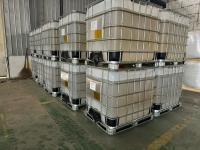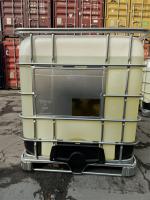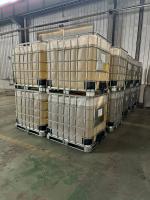Our Products
Product Center / Polyamine(FL 4410)equivalent model can be replaced by Chinafloc-polyamine-FL4410

1. Understanding Polyamine (FL 4410)
Polyamine FL 4410 refers to a polyamine-based coagulant and flocculant, often marketed under trade names like FLOQUAT™ FL 4410 PWG. These formulations typically consist of water-soluble, cationic polymers that are optimized for coagulation and flocculation processes in water and wastewater treatment systems. According to an NSF-certified listing, FLOQUAT™ FL 4410 is designated for those exact functions, with a maximum use level of 100 mg/L in potable water systems. NSF
2. Coagulation & Flocculation: Core Function
The primary application of polyamine FL 4410 is indeed in coagulation and flocculation, crucial processes in clarifying water. As a strongly cationic polymer, polyamine neutralizes negatively charged suspended colloids—such as organic matter, fine sediments, and turbidity-causing particles—facilitating their aggregation into larger, denser flocs that are easier to settle or filter out. chinafloc.comNSF
This functional behavior makes polyamine particularly effective in treating:
-
Raw water for drinking water production
-
Municipal wastewater seeking improved clarity and lower suspended solids
-
Industrial effluents with high organic or colloidal content
3. Wastewater Treatment Applications
a. Municipal and Drinking Water Treatment
In municipal settings, polyamine FL 4410 helps:
-
Enhance clarification in settling tanks
-
Lower turbidity and color
-
Reduce reliance on traditional inorganic coagulants
-
Improve performance of downstream filtration systems
Being NSF-certified implies it complies with stringent safety standards and is qualified for use within potable water processes. NSF
b. Industrial and Specialty Wastewater
Polyamine’s cationic nature lends itself well to industrial wastewater challenges, such as:
-
Treating papermaking effluents, where fine fibers and dyestuffs require effective removal
-
Dye wastewater, where color and chemical oxygen demand (COD) need mitigation
-
Textile, food processing, chemical, and mining industries, where suspended organics and colloids are prevalent
Research confirms that polyamine polymers can efficiently remove color and COD from dye-laden wastewaters. ResearchGate
4. Enhancing Treatment Efficiency
Polyamine FL 4410 not only aids in floc formation but also brings several operational benefits:
-
Rapid settling of flocs, shortening clarifier detention times
-
Improved sludge dewatering, yielding drier sludge cakes and reducing disposal volume
-
Lower chemical dosages compared to some inorganic alternatives
-
Versatility in different pH and turbidity conditions, especially effective in low turbidity waters
-
Compatibility with other coagulants or polymer blends, allowing for tailored treatment strategies hoochemtec.comGoogle PatentsBeijing Sinofloc Chemical Co., Ltd.
5. Specialized Uses Beyond Core Flocculation
While the principal use is in water treatment, polyamine systems also find adjacent specialized functions:
-
Deinking and paper recycling: Combined with melamine polymers, polyamine aids in coagulating ink-laden solids for clearer recycling water. Google Patents
-
Low-turbidity river water treatment: Polyamine can be blended with other agents to manage subtle color and colloid issues without overuse of harsher chemicals. hoochemtec.com
These applications highlight polyamine’s adaptability to fine-tuning and optimizing water quality.
6. Summary: Core Application of Polyamine FL 4410
In essence, the main application of polyamine FL 4410 is:
-
Coagulation and flocculation, particularly in water and wastewater treatment systems.
-
Clarification of drinking water, where it deposits suspended matter into manageable flocs.
-
Industrial effluent treatment, aiding in color and COD reduction—especially in dyeing and papermaking processes.
-
Operational improvements, including enhanced dewatering, faster sedimentation, and reduced chemical usage.
These functionalities stem from its high cationic charge, polymeric bridging capability, and effective interaction with negatively charged colloidal substances.
7. Why FL 4410 Stands Out
-
NSF Certification (100 mg/L use): Indicates safety and regulatory acceptance for drinking water treatment. NSF
-
Broad applicability: Suitable for municipal, industrial, and specialty wastewater streams.
-
Chemical efficiency: Lower dosage requirements than conventional coagulants.
-
Performance consistency: Effective across variable conditions, with reduced sensitivity to pH and organic loading.
-
Synergy potential: Combines well with other polymers or coagulants for enhanced treatment programs.
8. Suggested Structure for Full Benefits
If expanded into a detailed operational guide or technical dossier, you might structure a full 995-word document like this:
-
Introduction to Polyamine Chemistry and FL 4410 Characteristics
-
Principles of Coagulation & Flocculation
-
Municipal & Drinking Water Use Cases
-
Industrial & Dye Wastewater Applications
-
Operational Advantages (settling rate, dewatering, dosage)
-
Synergies in Combined Chemical Systems
-
Environment & Cost Benefits
-
Case Examples or Performance Data
-
Conclusion: Role in Sustainable Water Treatment




854_small.jpg)
